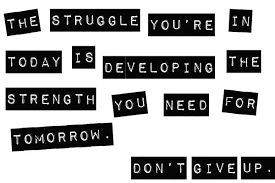Cycles
Resumen del Recurso
Página 1
Carbon Dioxide - Oxygen
When carbon is inside an animal it is part of the biosphere but when it is outside the animal it is part of the atmosphere Carbon is not always in the form of carbon dioxide Cellular respiration formula is glucose + oxygen -> carbon dioxide + water + energy Chemical equation is C6H12O6 + O2 –> CO2 + H2O + energy Photosynthesis is carbon dioxide + water –> glucose + oxygen + water Chemical equation is 6CO2 + 6H2O –> C6H12O6 + 6O2
Página 2
The Water Cycle
The energy source for evaporation from the Earth’s oceans is the Sun There are many options for which the water to go in the cycle
Página 3
The Carbon Cycle
Carbon is returned from an organic state to an inorganic state in a number of ways. As an animal breathes, t exhales carbon dioxide, returning it back to the atmosphere. When an animal or plant dies, it is broken down by bacteria or fungi and again the carbon is released. This is the process of decomposition Sometimes, instead of fully decomposing, a plant or animal may become fossilized leading its carbon to being stored in a rock. After millions of years and under the right conditions, these fossils may be turned into fossil fuels which are oil, coal and natural gas The carbon stored in fossil fuels is released when they are burned, this release is called carbon dioxide emission Each different fossil fuel emits a different amount of carbon dioxide as well as carbon monoxide and soot (carbon particles) Because people use fossil fuels so much more these days, the emission rate is approximately 30% higher than it was 200 years ago These carbon levels are important because having more carbon dioxide in the atmosphere is linked to having an increase of heat that is being trapped in the atmosphere (greenhouse effect) Carbon is found in the hydrosphere as dissolved carbon dioxide
Página 4
Natural Greenhouse Effect
Carbon is found in both living and non-living things The earth has a finite amount of carbon Living things are made of carbon (organic carbon) Carbon is in non-living things (inorganic) Carbon dioxide is important in our atmosphere Carbon is made in stars
¿Quieres crear tus propios Apuntes gratis con GoConqr? Más información.

